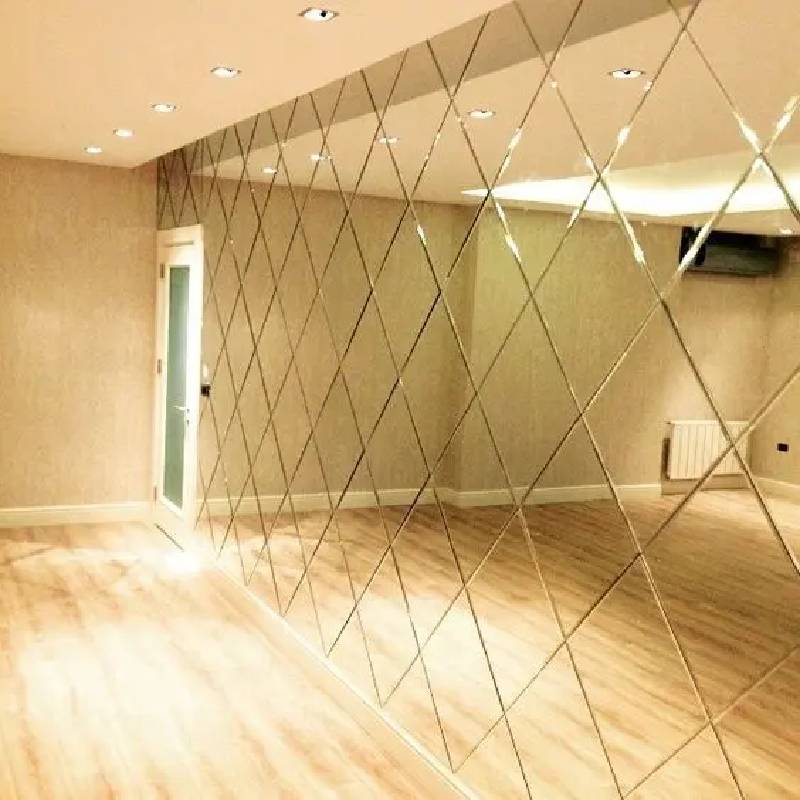The Emergence of Infrared Reflecting Laminated Glass A Revolutionary Advancement in Architectural Design
As the demand for energy efficiency and sustainability intensifies globally, the building industry continually seeks innovative materials that not only enhance aesthetic appeal but also contribute to environmental conservation. One such groundbreaking innovation is infrared reflecting laminated glass, a material that is rapidly gaining popularity in modern architecture. This article explores the composition, benefits, applications, and future potential of this advanced glazing solution.
What is Infrared Reflecting Laminated Glass?
Infrared reflecting laminated glass is a specialized form of glass that incorporates multiple layers, including an interlayer that can reflect infrared radiation while allowing visible light to pass through. This technology typically utilizes a thin film coating on the glass surface, which effectively reflects solar heat. The laminated structure enhances the glass's durability and safety characteristics, making it an ideal choice for various applications.
Benefits of Infrared Reflecting Laminated Glass
1. Energy Efficiency One of the most significant advantages of infrared reflecting laminated glass is its ability to improve energy efficiency in buildings. By reflecting heat, this type of glass reduces the demand for air conditioning, especially in warmer climates. This not only lowers energy bills but also lessens the building's carbon footprint, aligning with global sustainability goals.
2. Improved Comfort By minimizing the amount of heat entering a building, infrared reflecting laminated glass enhances indoor comfort. It helps maintain a stable indoor temperature, reducing the risk of overheating in sunny conditions. As a result, occupants can enjoy a more comfortable living or working environment without relying excessively on heating or cooling systems.
3. UV Protection In addition to infrared reflection, many laminated glass products also offer excellent ultraviolet (UV) protection. This feature is crucial for preserving furniture, flooring, and artworks that may fade or suffer damage from prolonged exposure to sunlight. By blocking harmful UV rays, infrared reflecting laminated glass helps maintain the integrity of interior furnishings.
infrared reflecting laminated glass
4. Safety and Security Laminated glass is known for its enhanced strength and resistance to shattering. In the event of an impact, the interlayer holds the glass fragments together, reducing the risk of injury and enhancing security. This feature is particularly valuable in areas prone to extreme weather conditions or vandalism.
Applications in Modern Architecture
Infrared reflecting laminated glass is versatile and can be applied in various architectural projects. It is widely used in commercial buildings, residential homes, and public structures due to its aesthetic appeal and functional benefits. Large glass facades, skylights, and curtain walls showcase this technology effectively, allowing for expansive views while minimizing heat gain.
Additionally, this type of glass is increasingly utilized in green building projects. As architects and builders seek materials that meet stringent energy efficiency standards, infrared reflecting laminated glass presents a viable solution. It can be seamlessly integrated into designs that prioritize both form and function, contributing to certifications such as LEED (Leadership in Energy and Environmental Design).
Future Potential
Looking ahead, the future of infrared reflecting laminated glass appears promising. With ongoing advancements in glass technology and coatings, we can expect even greater performance enhancements, such as improved reflectivity, durability, and aesthetic options. As the world shifts towards more sustainable practices, the integration of such innovative materials in building design will likely become the norm rather than the exception.
In conclusion, infrared reflecting laminated glass represents a significant stride forward in architectural design, marrying style with sustainability. Its numerous benefits make it an appealing choice for modern buildings, embodying the principles of energy efficiency, comfort, and safety. As the industry continues to evolve, this innovative material is poised to play a crucial role in shaping the future of sustainable architecture.
 Afrikaans
Afrikaans  Albanian
Albanian  Amharic
Amharic  Arabic
Arabic  Armenian
Armenian  Azerbaijani
Azerbaijani  Basque
Basque  Belarusian
Belarusian  Bengali
Bengali  Bosnian
Bosnian  Bulgarian
Bulgarian  Catalan
Catalan  Cebuano
Cebuano  Corsican
Corsican  Croatian
Croatian  Czech
Czech  Danish
Danish  Dutch
Dutch  English
English  Esperanto
Esperanto  Estonian
Estonian  Finnish
Finnish  French
French  Frisian
Frisian  Galician
Galician  Georgian
Georgian  German
German  Greek
Greek  Gujarati
Gujarati  Haitian Creole
Haitian Creole  hausa
hausa  hawaiian
hawaiian  Hebrew
Hebrew  Hindi
Hindi  Miao
Miao  Hungarian
Hungarian  Icelandic
Icelandic  igbo
igbo  Indonesian
Indonesian  irish
irish  Italian
Italian  Japanese
Japanese  Javanese
Javanese  Kannada
Kannada  kazakh
kazakh  Khmer
Khmer  Rwandese
Rwandese  Korean
Korean  Kurdish
Kurdish  Kyrgyz
Kyrgyz  Lao
Lao  Latin
Latin  Latvian
Latvian  Lithuanian
Lithuanian  Luxembourgish
Luxembourgish  Macedonian
Macedonian  Malgashi
Malgashi  Malay
Malay  Malayalam
Malayalam  Maltese
Maltese  Maori
Maori  Marathi
Marathi  Mongolian
Mongolian  Myanmar
Myanmar  Nepali
Nepali  Norwegian
Norwegian  Norwegian
Norwegian  Occitan
Occitan  Pashto
Pashto  Persian
Persian  Polish
Polish  Portuguese
Portuguese  Punjabi
Punjabi  Romanian
Romanian  Russian
Russian  Samoan
Samoan  Scottish Gaelic
Scottish Gaelic  Serbian
Serbian  Sesotho
Sesotho  Shona
Shona  Sindhi
Sindhi  Sinhala
Sinhala  Slovak
Slovak  Slovenian
Slovenian  Somali
Somali  Spanish
Spanish  Sundanese
Sundanese  Swahili
Swahili  Swedish
Swedish  Tagalog
Tagalog  Tajik
Tajik  Tamil
Tamil  Tatar
Tatar  Telugu
Telugu  Thai
Thai  Turkish
Turkish  Turkmen
Turkmen  Ukrainian
Ukrainian  Urdu
Urdu  Uighur
Uighur  Uzbek
Uzbek  Vietnamese
Vietnamese  Welsh
Welsh  Bantu
Bantu  Yiddish
Yiddish  Yoruba
Yoruba  Zulu
Zulu 

